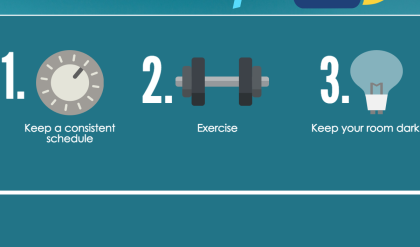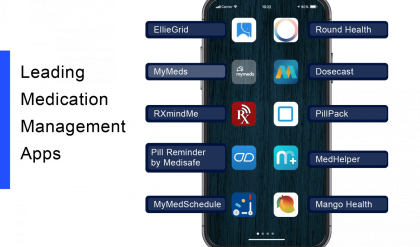
Decoding Doctor’s Appointments: Tips for Efficient Healthcare Access
Navigating the healthcare system can feel like deciphering a complex code. From scheduling appointments to understanding billing, the process often leaves patients feeling overwhelmed and frustrated. But what if we could crack the code? This article provides practical strategies and insightful tips to empower you to access healthcare efficiently and effectively.
I. Pre-Appointment Prep: Laying the Groundwork for a Successful Visit
Before you even pick up the phone, preparation is key. Think of it as assembling your “healthcare toolkit.” This involves:
-
Listing your concerns: Jot down all your symptoms, their duration, and any relevant information like medications, allergies, or past medical history. The more detail you provide, the better your doctor can understand your needs.
-
Gathering your medical records: Consolidating your medical history – test results, previous doctor’s notes, imaging reports – into one easily accessible place saves time and ensures consistent care. Consider using a secure digital health platform.
-
Choosing the right provider: Researching doctors, reading reviews, and considering their specialties will help you find the best fit for your specific health concerns. Don’t hesitate to schedule brief “meet and greet” calls with potential doctors to assess compatibility.
-
Understanding insurance coverage: Confirming your insurance coverage, deductibles, and co-pays before your appointment avoids unexpected financial surprises. Check your policy’s specifics regarding in-network providers and pre-authorization requirements.
II. The Appointment Itself: Maximizing Your Time with the Doctor
Your appointment is precious; make the most of it. Consider these tactics:
-
Punctuality is paramount: Arriving on time or slightly early allows for smooth check-in and minimizes potential delays.
-
Articulate your concerns clearly: Use the list you prepared beforehand to guide your conversation. Prioritize your most pressing concerns.
-
Active listening is crucial: Pay close attention to your doctor’s explanations and ask clarifying questions. Don’t hesitate to repeat information back to ensure understanding.
-
Note-taking empowers you: Bring a notepad or use your phone’s note-taking app to record key information, treatment plans, and follow-up instructions.
III. Post-Appointment Actions: Ensuring Seamless Follow-Up
The appointment isn’t over once you leave the doctor’s office. Effective follow-up is essential:
-
Reviewing your notes: Go over your notes and ensure you understand the diagnosis, treatment plan, and any prescribed medications.
-
Scheduling follow-up appointments: If necessary, schedule any recommended follow-up appointments promptly.
-
Medication management: Understand your medication instructions thoroughly, including dosage, timing, and potential side effects.
-
Seeking clarification: Don’t hesitate to contact your doctor’s office if you have any questions or concerns after your appointment.
IV. Beyond the Basics: Tools and Technologies for Enhanced Healthcare Access
Technology offers innovative solutions to simplify healthcare navigation:
-
Telemedicine: Remote consultations offer convenient access to healthcare, particularly beneficial for those with mobility challenges or in remote areas.
-
Patient portals: Online portals provide access to test results, appointment scheduling, and secure messaging with your healthcare provider.
-
Health apps: Numerous apps can help track symptoms, medications, and health goals.
V. Decoding Medical Billing: Understanding Your Healthcare Costs
Understanding medical billing can be daunting, but it’s crucial for responsible financial management. Here’s a breakdown:
| Term | Description |
|---|---|
| Copay | A fixed amount you pay for a doctor’s visit or other services. |
| Deductible | The amount you pay out-of-pocket before your insurance coverage begins. |
| Coinsurance | Your share of the costs after you meet your deductible. |
| Explanation of Benefits (EOB): | A statement from your insurance company detailing covered and uncovered charges. |
By proactively engaging in your healthcare, you can significantly improve your experience and optimize access to the care you deserve. Remember, you’re an active participant in your health journey; understanding the process empowers you to take control.

Additional Information
Decoding Doctor’s Appointments: A Deeper Dive into Efficient Healthcare Access
The challenge of efficiently accessing healthcare extends far beyond simply securing an appointment. While securing an appointment is the initial hurdle, optimizing the entire process – from preparation to follow-up – significantly impacts patient outcomes and healthcare system efficiency. A deeper analysis reveals several key areas requiring attention beyond the basic “tips and tricks” approach.
1. The Pre-Appointment Phase: Beyond Simple Preparation:
Simple advice like compiling a list of questions often falls short. A more analytical approach considers prioritization of questions. Patients should categorize questions based on urgency and relevance. For example, a critical question regarding a concerning symptom should take precedence over a less urgent query about medication side effects. This prioritization ensures the most vital information is addressed within the limited appointment time. Furthermore, proactively gathering relevant medical history – including past diagnoses, medications, and allergies – in a well-organized format (e.g., a concise, typed document) allows the physician to focus on diagnosis and treatment rather than data collection.
2. Optimizing the Appointment Itself: Beyond Time Management:
Effective communication is paramount. Studies show that patients who actively participate in the conversation – clearly articulating their concerns and actively listening to the physician’s explanations – experience better health outcomes. This requires not just asking questions, but also employing active listening techniques, like summarizing the physician’s points to ensure understanding. For instance, instead of passively receiving a diagnosis, a patient could say, “So, you’re saying my symptoms point towards condition X, and the next step is Y?” This confirms understanding and allows for clarification if needed.
Furthermore, leveraging technology can significantly improve the appointment experience. For instance, using patient portals for secure messaging to exchange information before or after appointments reduces phone calls and wait times. The use of telehealth for routine check-ups or follow-ups can also increase access, particularly for patients in rural areas or with mobility issues. However, a critical analysis reveals the digital divide needs to be addressed to ensure equitable access to these technologies.
3. Post-Appointment Actions: Beyond Follow-up Scheduling:
Scheduling a follow-up is only the first step. Understanding the prescribed treatment plan, including medication instructions, potential side effects, and lifestyle modifications, is crucial. Patients should actively seek clarification if anything is unclear. Moreover, effective follow-up involves more than just attending the scheduled appointment. It includes proactive communication with the healthcare provider if symptoms worsen or new issues arise.
4. Systemic Factors Influencing Access:
Individual strategies are insufficient without addressing systemic issues. Long wait times are often rooted in broader healthcare system inefficiencies, such as physician shortages, inadequate appointment scheduling systems, and insurance complexities. Analyzing regional variations in wait times can reveal underlying structural problems. For example, a study might compare wait times for specialist appointments in urban versus rural areas, highlighting disparities in resource allocation and access.
5. Case Study Example:
Consider a patient with chronic pain. A proactive approach would involve compiling a detailed pain diary documenting severity, location, and triggers before the appointment. During the appointment, prioritized questions about treatment options and pain management strategies would be discussed. Post-appointment, the patient would actively engage with the prescribed treatment plan, including physical therapy and medication, and communicate any changes in pain levels to their physician. This contrasts with a passive approach where the patient arrives unprepared, leaves with unanswered questions, and fails to actively manage their condition.
In conclusion, efficiently accessing healthcare requires a multi-faceted approach. This goes beyond simple tips and necessitates a deeper understanding of communication strategies, technological utilization, systemic issues, and proactive patient engagement throughout the entire healthcare journey. Analyzing individual behaviors and systemic challenges provides a more holistic understanding and allows for the development of more effective strategies for improved access and patient outcomes.






